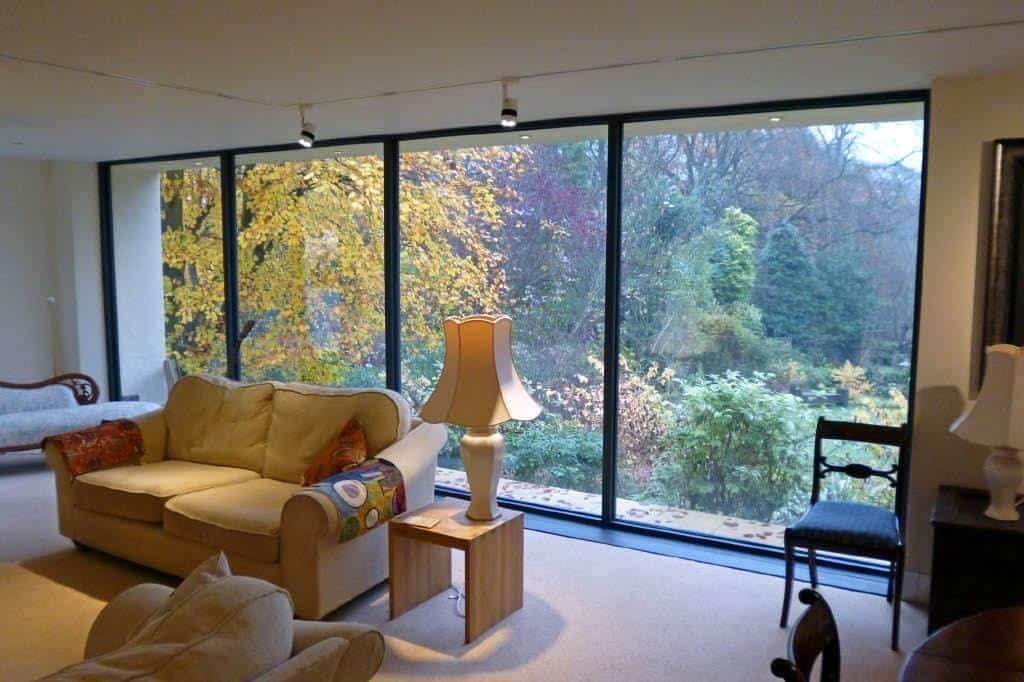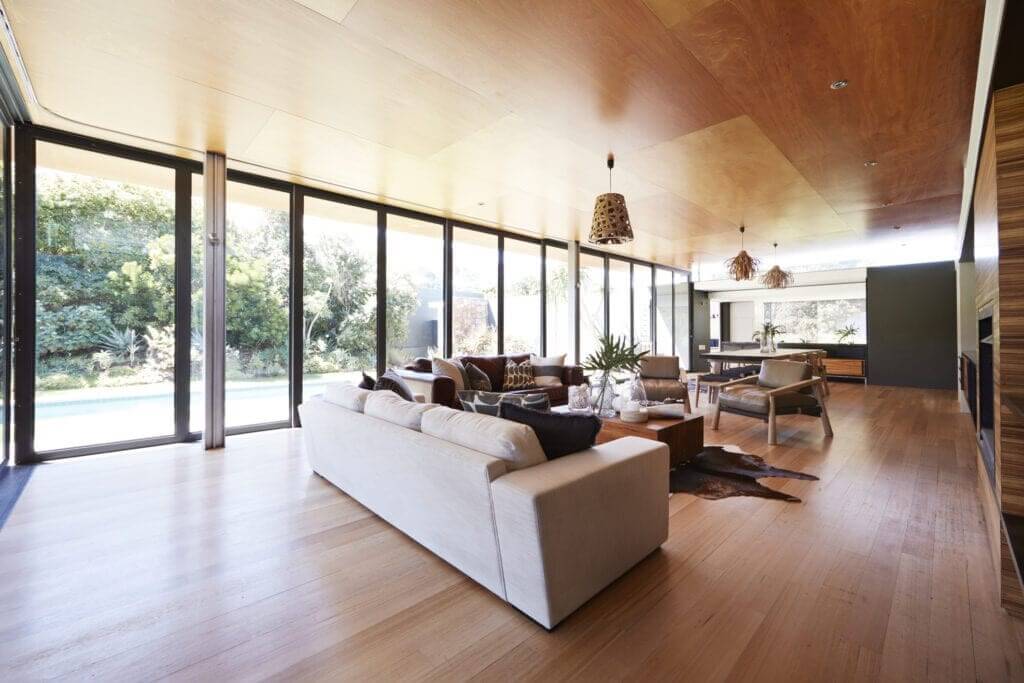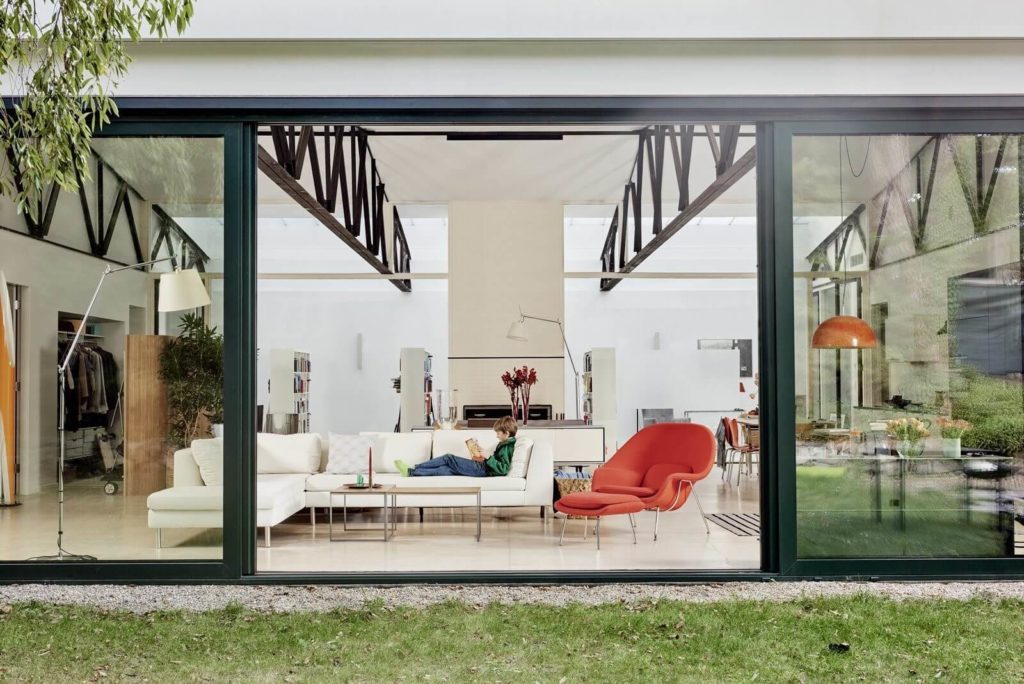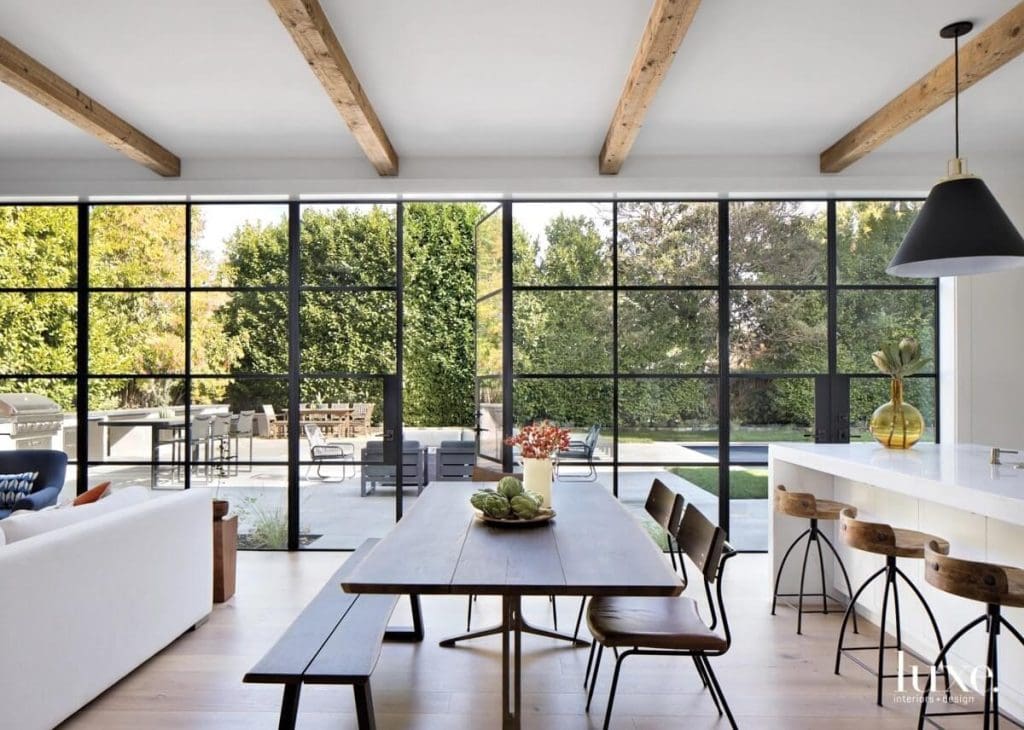
Floor-to-ceiling windows, commonly referred to as window walls or curtain walls, instantly give any space the feeling of openness and elegance. It also allows maximum natural light to enter a room, not to mention the unobstructed view of the outside. This helps blur the line between interior and exterior. Not only is it aesthetically pleasing, but quite practical too.
However, there’s a common belief that floor-to-ceiling windows are quite expensive and can only be installed in high-budget projects. So, how much of this is true? Let’s have a look at the pros and cons of floor-to-ceiling windows before deciding if they’re worth the money.
What is a Floor-to-Ceiling Window?
Before we discuss whether or not these windows are expensive, let’s find out what exactly they are and their pros and cons. A floor-to-ceiling window is made up of a combination of large windows that give the appearance of a glass wall. It is placed between the ceiling slabs and the floor.

This window is called a custom window when it is hung outside floor and ceiling slabs. Incorporating this floor-to-ceiling window will connect you with the outdoors better than any other element. These windows are usually constructed of a combination of picture and awning windows.
Pros of a Floor to Ceiling Window
- It provides lavish natural light as it brightens up the space.
- It provides uninterrupted views of the outdoors, melding outdoor and indoor living.
- Floor-to-ceiling window gives the illusion of a much larger space.
- Most windows are operable, so they allow plenty of fresh air into the home.
- It is an effortless focal point of any room or space.

Cons of Floor to Ceiling Window
- Too much exposure to natural light can affect some fabrics, carpets, and furniture.
- You will have to invest in high curtains or blinds to allow some privacy.
- If you’re installing a floor-to-ceiling window in an already built home, then it will require lots of structural changes.
- Cleaning and maintaining such high glass can be quite a chore.
Where is it suitable to install a Floor-to-Ceiling Window?
In a city where urban density is at its max, installing such a window will only give you a view of another building. In such a situation, it would only be a waste of money and resources. However, it’s a completely different story if you have a view of a lake, forest, or some other scenic landscape. This would make a floor-to-ceiling window in a beautiful location shine better than ever.

Difference between Floor-to-Ceiling Window and Glass Wall:
It is a common misconception that these two are the same. However, there are distinct differences between a floor-to-ceiling window and a glass wall. To start with, both have clear glass panels in their construction. Though they look the same, the difference lies in the operation. The floor-to-ceiling windows are designed by installing multiple windows in a combination.
They are operable or fixed, depending on the requirements of the user. Whereas, in the case of glass walls, the glass panels are arranged together to give create a wall made of glass. These walls are non-functional, so you will not be able to open or close them at will.

Is it Floor to Ceiling Windows Expensive?
For homes with more than two or three storeys, a floor-to-ceiling window can be a quite cost-effective option depending on how you choose your materials. A glass wall is certainly more expensive than a brick wall. It’s not just the cost of the window; the framing structure must be engineered to perfectly hold up an entire house without a conventional header.

Not only that, but once the construction part is done, the cost of window treatment is considerably higher than the traditional systems that mount to walls. The cost of each window will depend on the materials, coatings, size, and type of window. It can also depend on the installation fees and whether or not the building is under construction or already built.
The type of glass and glazing used in the windows is one of the major factors that determine the cost of a floor-to-ceiling window. There are several different types available on the market that corresponds to different sets of requirements. So, all in all, the conclusion would be that incorporating a floor-to-ceiling is costlier than a normal brick wall.
– Tulisha Srivastava
 (+91) 7249196273
(+91) 7249196273
